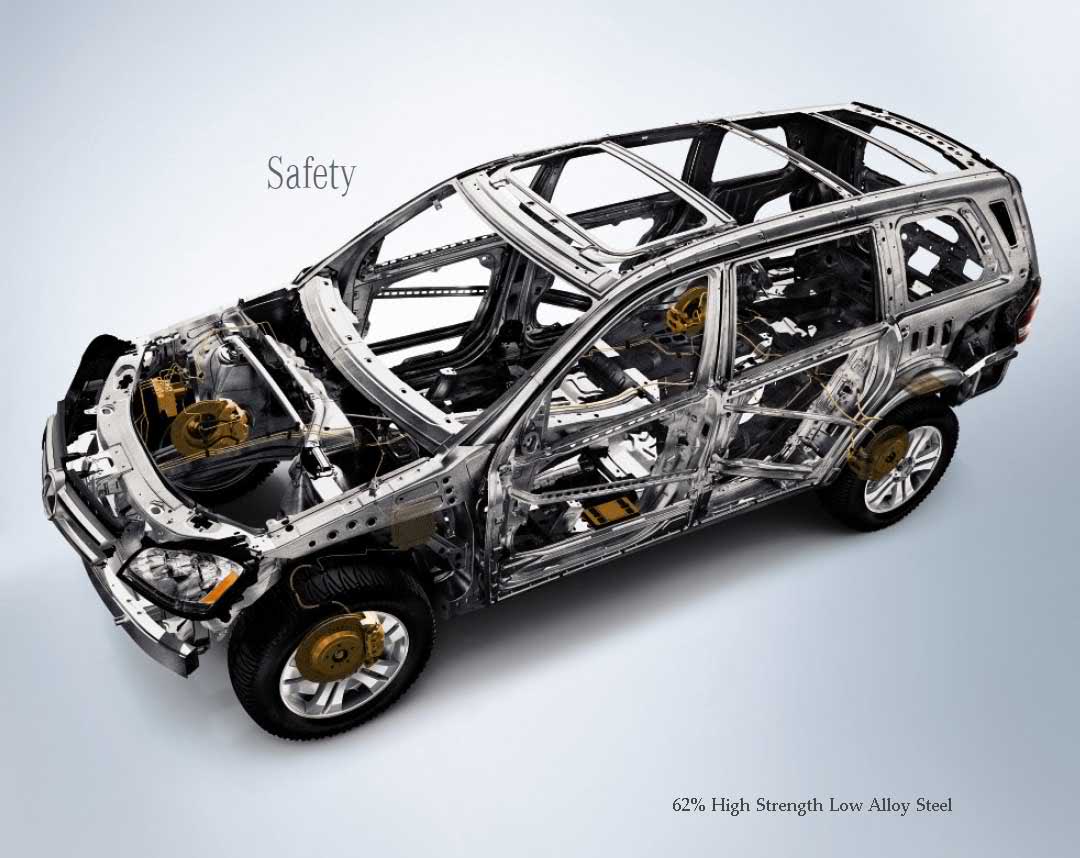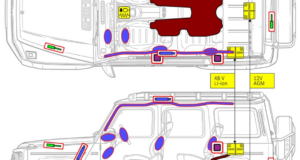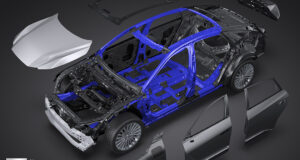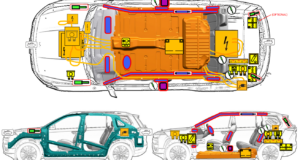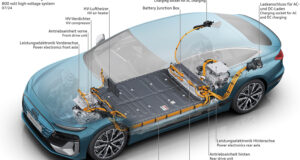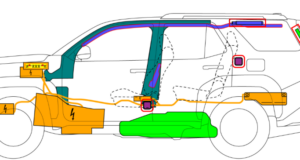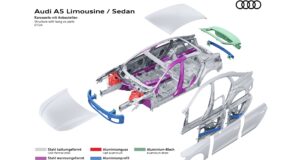Below is a unique image of the Reinforced safety cage body structure with over 62% use of High-Strength Low Alloy (HSLA) Steel with ultra high-strength steel in the B-pillars and rocker panels. Make sure you also read below about the airbags, head restraints, and seat belts.
- 12-WAY AIR BAG PROTECTION, The GL features the 12-way protection of an 8-air bag system. It includes dual-stage front air bags, front and 2nd-row side-impact air bags and full-length window curtain air bags. The window curtain air bags deploy along all three rows of windows on the affected side. When combined with properly worn seat belts, they help to protect outboard occupants from head injury and broken glass in certain side impacts or rollovers.
- BODY STRUCTURE, The unit body of the GL-Class uses advanced technology and robust materials to create a virtual fortress for its seven passengers. High-Strength/Low-Alloy (HSLA) steel is used in many areas throughout the vehicle and makes up 62% of the body structure. Roof pillars employ three layers of steel, and doors feature steel crossbeams. Full-width front and rear crossmembers, along with a reinforced floorpan and door sills, combine to provide protection in a variety of impacts. Advanced front and rear crumple zones progressively deform to help absorb the energy of an impact, while underhood components are staggered to help prevent them from stacking up in a frontal impact, thereby reducing the likelihood of intrusion into the cabin. An ellipsoidal front bulkhead helps channel some of the forces of a frontal impact under, over and around the passenger cabin.
- ACTIVE HEAD RESTRAINTS, In the case of a rear impact exceeding a preset threshold, the Active Head Restraints spring forward, reducing the distance between the head restraint and the front-seat occupants’ heads. This action helps limit the rearward travel of their heads, thus reducing the possibility of whiplash-like neck injuries.
- SEAT BELTS, Seat belts are arguably the most important passive safety feature, so the GL incorporates seat belts with Emergency Tensioning Devices (ETDs) and adaptive belt force limiters at all outboard seating positions. In the event of a collision exceeding a preset threshold, the ETDs use a pyrotechnic charge to instantly remove slack from the seat belts. Adaptive belt force limiters allow a slight amount of give in the seat belts. This helps to more evenly distribute the forces between the seat belts and air bag (for front-seat occupants) and reduce the peak seat-belt forces on the occupant.
 Boron Extrication An in-depth look into vehicle extrication and rescues involving today's automobiles
Boron Extrication An in-depth look into vehicle extrication and rescues involving today's automobiles
